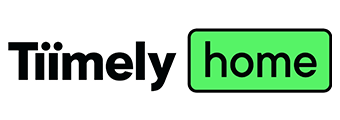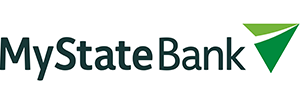Banks have fixed rate loans available for varying terms – sometimes up to 10 years, but the most popular period for fixed rate home loans are between one and three years.
Fixed home loans can have a higher interest rate than variable-rate options, but aren’t susceptible to interest rate changes so could ultimately save you money in a volatile financial market.
Most banks, mortgage brokers, building societies, credit unions, and Australian lenders offer fixed-rate home loans. When you apply for a fixed interest rate on your home loan, your lender will typically offer you a rate lock. This is done to protect you in the event the interest rate changes in the time it takes to move from application to settlement, which could take a month or longer. A rate-locking fee is usually 0.10% of the loan amount, and applies for 90 days.
Should I consider a fixed-rate home loan?
The most important aspect of a fixed rate loan is balancing a rate you can afford against the certainty of your repayments. If you’re happy with the rate, want the surety of set payments and don’t think your circumstances will change within the term, then a fixed rate loan could be a good idea.
The biggest advantage of a fixed rate is that your weekly, fortnightly, or monthly loan repayments won’t change. This can offer you peace of mind and certainty around your repayments. You can budget accordingly and then forget all about rate changes until the fixed period ends – and that can be important for first home buyers or specific stages of your life where disposable income is limited.
Further, if variable interest rates were to rise, you might end up with a better rate than the average; however it should be noted that rate changes can be hard to predict.
On the other side, there are several reasons why a fixed home loan may not work for your needs.
Three main considerations are:
- Limited features: Fixed rate home loans generally don’t have a lot of flexibility compared to variable rate home loans. For example, many will not allow you to make extra repayments or cap extra repayments to a certain amount – usually $10,000 per year.
- Break fee: If you decide to end a fixed rate loan before the specified term, you may face a break fee. This can cost a few hundred dollars or potentially thousands. If you’re going to take out a fixed-rate loan, it’s a good idea to go in with the mentality of seeing it out for the entire fixed period.
- Rates could drop: If the Reserve Bank of Australia (RBA) cuts the cash rate you will not benefit from the lower rate that will be applied to variable home loans.
It is also worth noting that most home loan interest rates can only be fixed for a limited number of years, after which time it will likely revert to the lender’s standard variable rate. If interest rates have gone up during your loan’s fixed term, you could be facing a big increase in repayments, so it’s best to plan ahead and know what the revert rate will be. Naturally, you could look to refinance with your lender or seek a different product from a new lender.
How do I compare fixed home loan rates?
A good fixed rate home loan will need to suit your circumstances. As a starting point, consider the following:
A low interest rate:
For any home loan interest rate, lower is obviously preferable as it ultimately saves you money. When looking at a fixed rate loan, you are aiming to lock in a good rate and have that protection if interest rates rise.
Low fees:
As with any loan product, be sure to look for all fees; particularly any annual or ongoing fees, or – should you think you may need to end the loan before the fixed period – a break fee.
The fixed length:
Fixed rate borrowers generally choose between one to five year fixed rate loans. Most loans give you multiple options, with different rates for each. Rates are generally more competitive for shorter fixed periods. For instance, one-year fixed rates are more competitive than five-year fixed rates.
Additional features:
As you will read in the next section, some fixed home loan products now have similar features to variable loans, such as the ability to make extra repayments, access to an offset account or a redraw facility.
Who is most likely to benefit from a fixed home loan?
Fixed home loans tend to suit people who like to plan ahead and want the stability of knowing exactly how much their home loan repayments will be over the set term.
First home buyers often find the security of fixed rate home loans appealing as the stability over the first few years of a loan can help borrowers manage their household budget and keep finances under control while they build up their equity.
Investors can also find the stability of fixed rate home loans useful as the loan repayments won’t increase beyond the property’s rental income during the fixed period. This will ensure steady income from the investment.
In either case, borrowers should remember that when their fixed rates expire, they will likely revert to the lender’s standard variable rate, or at least a rate much higher than what they might have experienced during the fixed term.
Can you get additional features with a fixed rate home loan?
Many fixed rate home loans are very rigid; however there are some on the market which offer features that may be important to your individual needs. As with any home loan product, there are always conditions, and so you should consider them thoroughly before committing to a fixed rate loan.
- Extra repayments: With a fixed rate home loan you may be able to make extra repayments but generally there will be a cap or limit to how much you can make each year or over the term of the loan.
- Redraw: If you can make extra repayments you may also have the ability to redraw this amount. When it comes to fixed rate home loans, lenders will often charge a fee for this and a minimum redraw amount.
- Offset account: An offset account works just like a regular savings or transaction account, but with one major difference – it’s linked to your mortgage. Any money that you pay into an offset account is included in the interest charge calculations. The more money you have in there, the more you save on interest charges. Only some fixed loans will have an offset loan facility, however compared with a variable rate home loan where you can offset 100% of the loan amount, with a fixed rate home loan you will only be able to offset up to a certain dollar value.
- Repayment flexibility: Similar to a variable rate loan, some fixed rate home loans will enable you to select the repayment frequency that suits you. Options include weekly, fortnightly and monthly repayments.
- Loan-to-Value ratio: Fixed home loan rates likely have different LVR (loan to value ratio) requirements to variable rate loans so while you might need an LVR of 80% for a variable rate loan, that could shift to an LVR of 90% when applied to a fixed term loan.
- Split loan: Most fixed rate home loans will allow you to split a portion of the fixed rate with a variable rate. There may be some limits to how much you can split but it can mean that you get the benefits of rate certainty for the fixed portion of your loan and added flexibility on the variable.
Fixed rate versus variable rate
While fixed rates offer stability, variable-rate home loans are popular in Australia because they offer flexibility. Banks’ wholesale funding structures has also historically allowed them to remain more competitive in the variable-rate space than the fixed-rate space.
Variable rates typically offer lower exit fees, more flexible repayment options and features such as offset accounts and redraw facilities. However they are a less secure option than fixed rate home loans, yet it’s worth noting that variable rate mortgages don’t regularly change unless there is movement in the official cash rate.
Still, if you are looking for stability and peace of mind, especially in a low rate environment, fixed-rate home loans may best suit your needs.
What personal considerations should I make?
If you are considering a fixed rate home loan, the following questions could help your decision making process:
Is it likely you could make extra repayments?
Before committing to a fixed rate, it’s important to understand what, if any, restrictions the bank puts on making extra repayments. Some products will not allow you to make any extra repayments which would ultimately cost you money. Other lenders may charge a fee or limit the number of extra repayments a customer can make during their fixed-rate period.
Would cash flow certainty give you peace of mind?
One advantage of taking out a fixed rate home loan is that the borrower knows what their repayments will be each month or fortnight, because the interest rate stays the same for the duration of the fixed term. This could be an attractive option that could make budgeting easier and support cash flow; particularly for first home owners or investors.
Is there a chance you might need to leave the loan early?
Most fixed rate home loans will come with a ‘break fee’ if you want to end the loan before the fixed period expires. This cost could be hundreds or thousands of dollars.
While there are things in life you can’t control, you may have longer-term plans that could change your circumstances and force you into prematurely ending the fixed term home loan. For example, if there is a chance that you might sell your house before the end of the fixed term, you will be looking at a break fee.
It’s a good idea to confirm whether the lender allows early repayment of the loan and be clear that if market interest rates fall a borrower could be up for a cost, potentially in the thousands of dollars, to compensate the bank.
Do you know what the revert rate looks like?
After your fixed rate loan period ends, you will shift to the ‘revert rate’. The revert rate will often be higher than what you have been paying through the fixed term. As such, you will need to plan ahead, and be willing to refinance to retain a competitive interest rate.
Are you comfortable with the repayment amount?
This may sound obvious, but fixing a home loan interest rate is about locking in repayments at a level that suits your situation, rather than trying to guess interest rate movements in the future.
If you are unsure whether or not to be entirely locked into a fixed-rate term for a number of years, another option could be to consider splitting a home loan. This means that part of the home loan will be charged at a fixed rate for a period of time while the rest is charged at a variable interest rate.
How do I decide on the fixed-rate home loan term?
If you have decided that a fixed rate home loan is best for your needs, the main consideration will be how long you decide to lock-in. This should ultimately depend on your plans for the next one, two, three or five years.
If you think you may need to refinance the property through the fixed term, or require a degree of flexibility in your repayments, then you should consider whether a longer term could disadvantage you. Remember that break fees will be applied if you terminate the fixed rate loan before the end of the fixed term. These break costs can be expensive so you need to consider all aspects before committing.
Does the length of the loan affect the interest rate?
The fixed-rate period is important. While the term of the fix means your repayments are unaffected during this period of time, the overall length of your home loan’s term will have an impact and can affect how much interest you’ll pay over the lifetime of the loan.
Most mortgages are 25 or 30 years in length, however shorter and longer options are available from some lenders.
With a shorter term home loan you will make fewer repayments, with each repayment accounting for a larger percentage of the loan’s principal. A short home loan will generally be defined by higher month to month repayments. This also means fewer interest charges and less interest paid in total over the lifetime of the loan.
Conversely, stretching out your home loan over a longer term means making more repayments to pay off a smaller percentage of the principal. It is more affordable to do it this way on a month to month basis, however the interest charged will increase over the life of the loan and will cost you much more than a shorter-term fixed loan.
What happens at the end of the fixed rate period?
At the end of your fixed term, your lender will generally move your home loan to the ‘revert rate’. Revert rates are typically higher, so you need to be ready for an increase in your prepayments. Alternatively, you can choose to commit to another fixed rate, switch to a variable home loan, or refinance.
Could a fixed rate home loan be cheaper even after paying break costs?
Breaking a fixed rate loan to refinance to a lower rate can incur significant break fee costs; however if the potential repayments of a new loan are significantly lower than your current payments, you could end up saving money in the long run.
Fixed rate home loans: Advantages and Disadvantages
As with any product, there are advantages and disadvantages to fixing your home loan rate.
Advantages
- Repayments remain consistent from month to month
- Simplified budgeting
- A fixed rate loan is a secured loan and is thus protected from interest rate rises
Disadvantages
- Interest rate cuts are not a factor and fixed rate holders gain no benefit
- Repayment flexibility is limited
- Break or exit fees can be costly
Fixed Rate: Glossary of terms
| Exit cost | Otherwise known as a ‘break fee’, the exit cost is a fee charged to borrowers if they exit their home loan early. This is usually applied to fixed rate home loans. |
|---|---|
| Fixed interest rate | Fixed interest rates are interest rates that are locked in for a certain period of time, usually between one and five years. |
| Lenders Mortgage Insurance (LMI) | An insurance that protects the home loan lender, if a borrower defaults on their payments. LMI is typically applied to home loans where the loan to value ratio (LVR) is higher than 80%, or the borrower has a deposit of less than 20%. |
| Loan to Value Ratio (LVR) | Most lenders require an LVR of 80%; this means the borrower will pay 20% of the value of the property. Essentially, it is the size of a home loan compared to the value of the property. |
| Offset account | An offset account is a transaction bank account connected to your home loan. The money from this account is used to offset your home loan, which means you’re only charged interest on the difference between the total loan balance and the amount offset. For example, if you owe $200,000 on your home loan but you have $20,000 in your offset account, the bank would only calculate interest on $180,000. Be aware, however, that not all offset accounts are 100% offset. |
| Redraw | A redraw facility allows mortgage holders to access extra repayments made into their home loan. Redraw balances can help reduce interest on your home loan. |
| Split Rate Home Loans | A split home loan is when you divide your loan into two parts. This means a portion of the loan could come under a fixed interest rate with the remainder being variable. |
| Variable Rate Loan | Variable home loans are defined by the potential for interest rate fluctuations. The variable interest rate may be changed regularly by a lender and is usually dictated by the Reserve Bank of Australia’s (RBA) official cash rate and changes in market interest rates. Due to interest rate fluctuations, your monthly repayments could vary from month to month. With lower exit fees, more flexible repayment options and useful features like offset accounts and redraw facilities, variable home loans have been found to be the preferred choice for many Australians. |



























